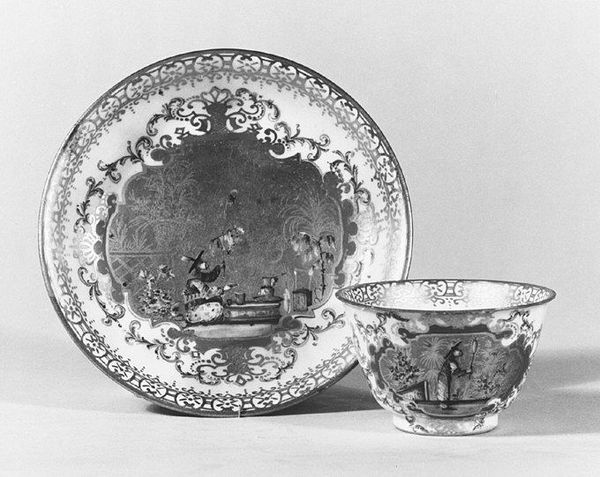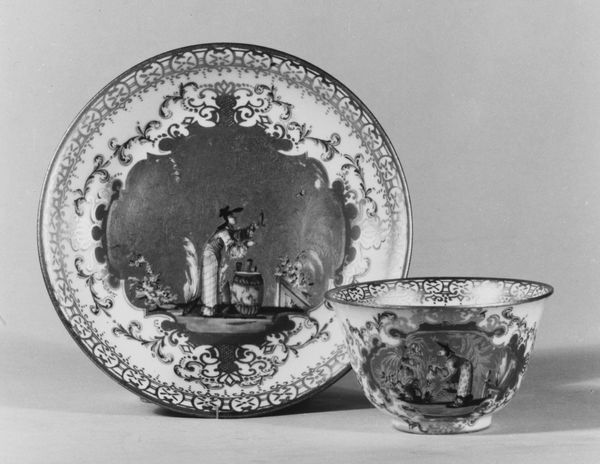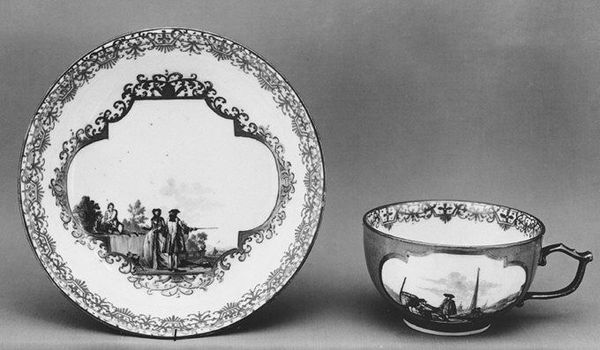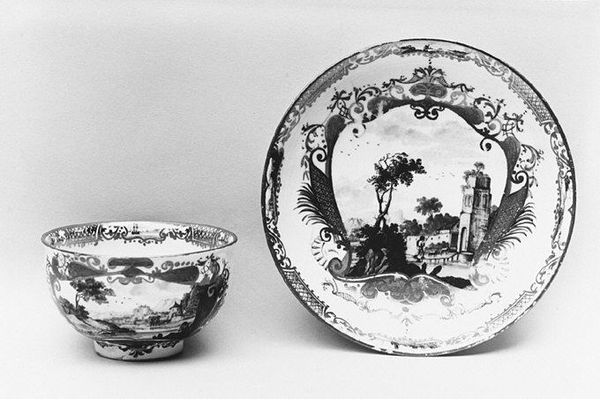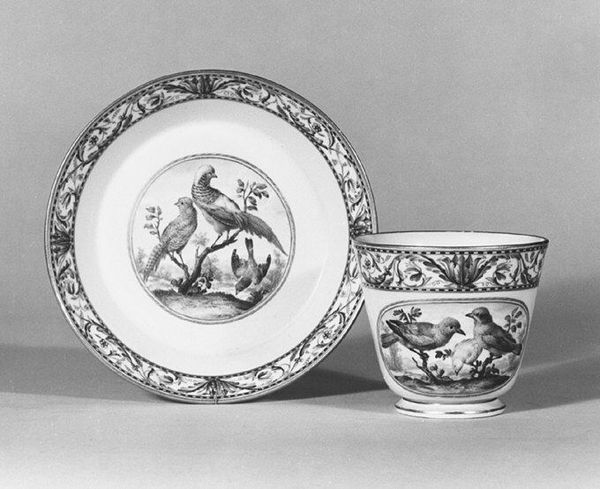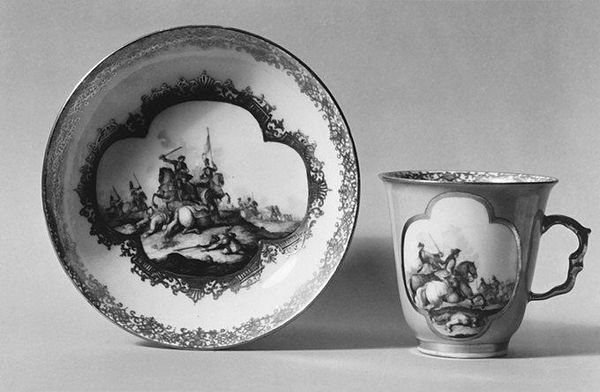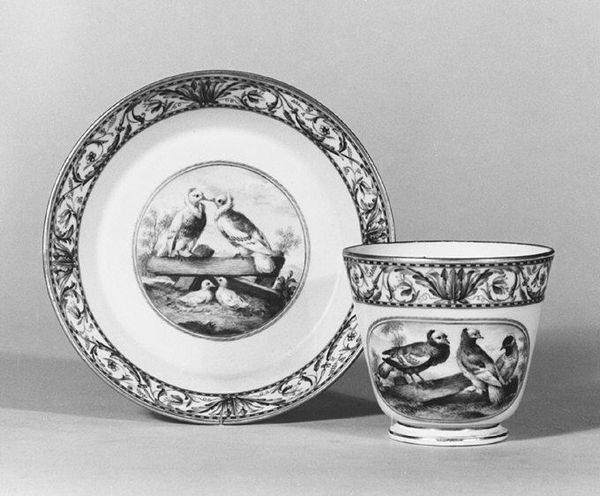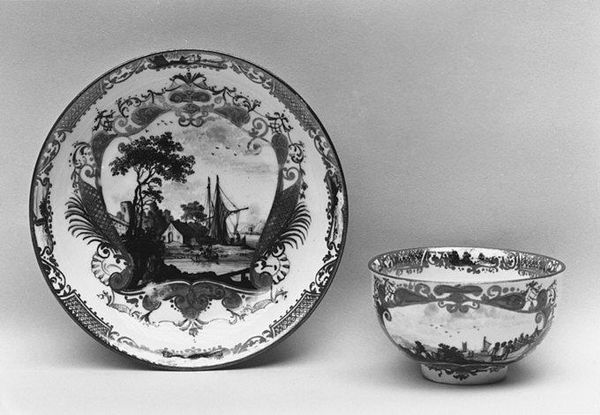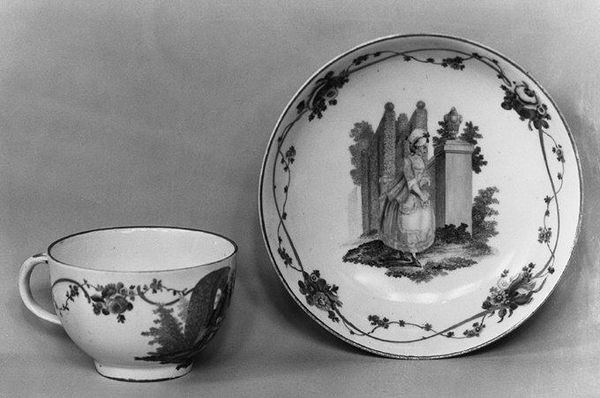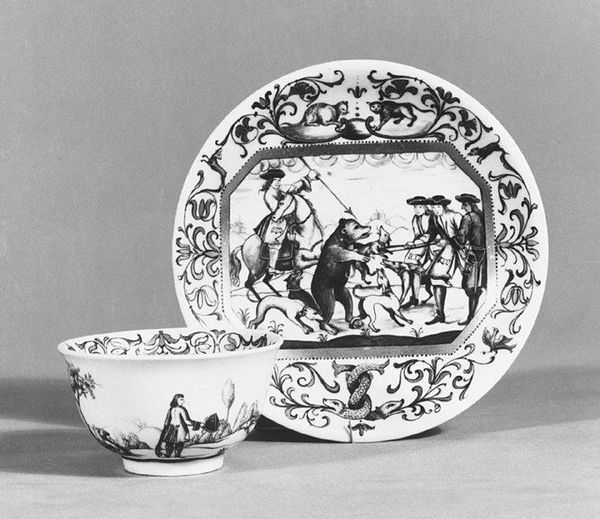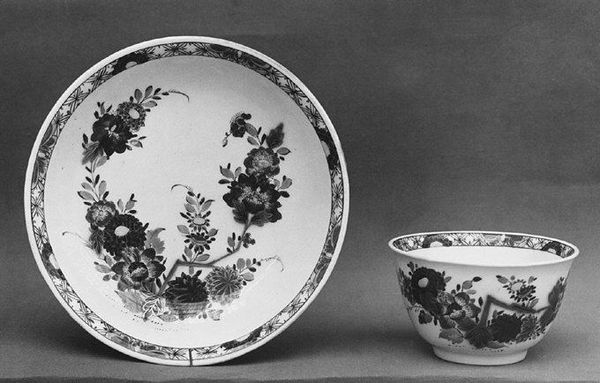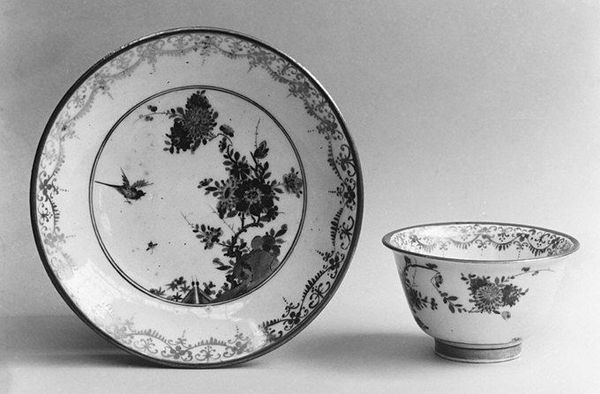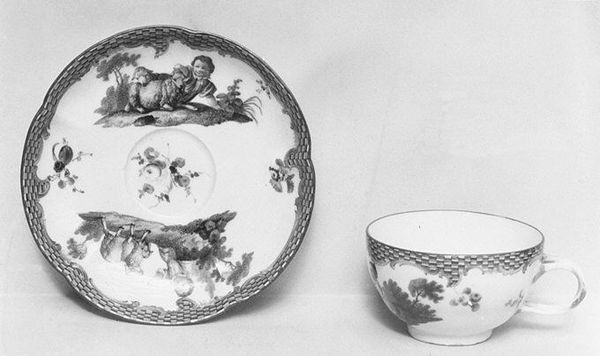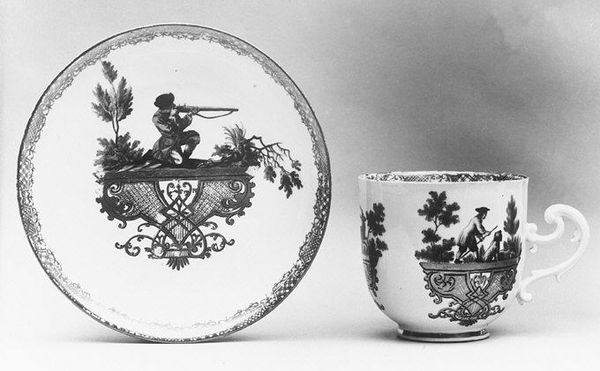
ceramic, porcelain
#
landscape
#
ceramic
#
porcelain
#
figuration
#
decorative-art
#
rococo
Dimensions: Height (Cup (.157)): 1 3/4 in. (4.4 cm); Diameter (Saucer (.158)): 4 7/8 in. (12.4 cm)
Copyright: Public Domain
Curator: Here we have a delicate porcelain cup and saucer made by the Meissen Manufactory, sometime between 1720 and 1740. It's currently held at the Metropolitan Museum of Art. Editor: My first impression is of a miniature world captured in monochrome. The dark imagery against the stark white of the porcelain gives it a formal, almost theatrical air. Curator: Exactly. And that starkness emphasizes the hierarchical context surrounding porcelain at the time. Its creation and consumption were tied to colonialism and the extraction of resources from colonized lands, underscoring the socio-economic imbalances of the 18th century. Editor: The images decorating the set certainly tell a story, don’t they? It feels allegorical, this small figure on horseback beside the large tree. The iconography is fascinating. What readings are suggested by the chosen visual cues? Curator: One must recognize how porcelain in the Rococo period functioned as a canvas reflecting the ideals of the elite. Figuration on the surface promotes an escapist narrative for those with privilege to express ideas about land, property and their idealized self. Editor: The presence of these repeated baroque scroll patterns further frames these narratives. Do the decorative frames and embellishments reinforce a sense of curated reality and artificiality? Curator: Yes, the borders amplify the central image—they serve to remind us that these depictions aren't mirrors to real life but constructs designed to promote certain viewpoints. We see how porcelain objects actively shape culture. Editor: Examining the piece through the lens of its historical symbolism adds such a rich layer to what might otherwise seem like a beautiful, but ultimately mute, artifact. Curator: Precisely. By recognizing the socio-political undertones of art, it can help challenge oppressive dynamics that perpetuate themselves. Editor: Looking closely at objects can tell us so much about ourselves.
Comments
No comments
Be the first to comment and join the conversation on the ultimate creative platform.
